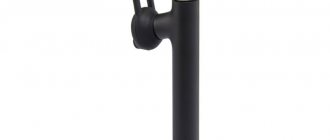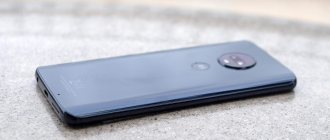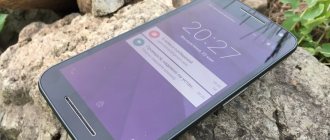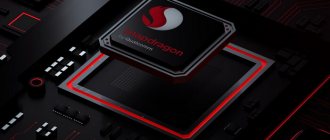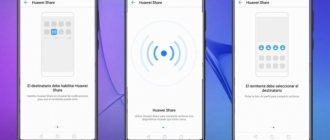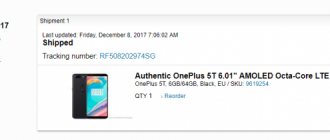The Motorola brand does not have the strongest position in the CIS and in the international arena. The corporation is still promoting the concept of modular smartphones, which is not that popular. But the main thing is that their devices are not cheap and from the point of view of buyers, they do not offer anything interesting for their money. Not long ago the Motorola Moto Z3 Play smartphone was released, and a little later we were able to get acquainted with its improved modification, which costs about the same.
An interesting situation is emerging: at first glance, the second generation is better in everything, but there is one big pitfall. Let's take a detailed look at the characteristics of both models and find out which one is better based on the totality of specifications. The title of each sub-item indicates the winner of the category, and in the end we will draw a general conclusion based on our tests.
Design (parity)
The smartphones have the same appearance and have a 6.01 inch screen with rounded corners, which, in theory, evenly distributes the load in the event of a fall at an angle, which increases impact resistance. The frames of the review heroes are not record thin, but they are very small, both on the sides and on the top and bottom. It's nice that there is no cutout in the display.
The devices have a fingerprint sensor, but it is not on the front or back panel, as we are used to, but on the left side. The flat lid has a massive round block with two chambers, which protrudes strongly above the glass surface and is located in the middle of the upper part of the backdrop.
The layout of the elements is unusual. At the bottom we only have a USB Type-C charging port. The power key is located on the left side, and the volume rocker is on the right. On both sides, the smartphones are covered with protective glass Corning Gorilla Glass 3, but there is no protection from water and dust, as well as wireless charging. There is only an oleophobic coating that repels water.
In the hand, the gadgets feel interesting, even pleasant, but they lie unsteadily on the surface. This is all due to the huge protruding block with cameras and a very slippery body.
Design of Motorola Z3 Play
The thickness of the gadget is only 6.75 mm. For comparison, the iPhone X is 7.7mm thick. The difference is small, but thinness is the first thing you'll notice when you pick up the Z3 Play. This size makes the phone quite light (156 grams), which definitely improves ergonomics.
The Moto Z3 Play has a 6.01-inch screen on the front, but the device doesn't feel too big. The top and bottom bezels aren't exactly thin, but overall the phone looks sleek and modern.
The power button is on the left side, and the volume controls are on the right. Thanks to its thickness, light weight and rounded corners, the device fits comfortably in the palm of your hand. But, I would like to see the rear curved like on the original Moto X.
On the back of the Z3 Play we find a glaring drawback of such a thin solution - the camera protrusion is too large and annoying, due to which the smartphone lies unsteadily on a flat surface. This situation can be corrected by connecting the Moto Mod module, which makes the entire rear part uniform, but at the same time increases the thickness.
The front and back of this Moto smartphone are protected by Gorilla Glass 3, but unfortunately there is no support for wireless charging.
Display (parity)
The matrix is one to one on both smartphones. This is a 6.01-inch Super AMOLED screen with a resolution of 2160 × 1080 pixels, which occupies approximately 78% of the front part of the gadget. The aspect ratio is 18:9, the pixel density is 402 ppi.
The screen is good, not as beautiful as on the flagships of Apple or Samsung, but there are no flaws in it. The level of brightness, contrast and saturation is sufficient for any use case. It’s comfortable to watch videos, photos or just flip through pages in the browser. Viewing angles are good. There is a night mode and a color correction function.
Firmware (parity)
Both the Moto Z3 Play and Moto Z3 come with Android 8.1 Oreo. Their shell is very close to bare Android, but has a number of distinctive features and additional options. The company claims that these phones will be updated to Android Pie soon. Unfortunately, the exact dates for receiving updates have not been announced.
The Android add-ons here are quite nice. I was incredibly pleased with the gesture control system. She's literally perfect at the moment. Essentially, this is a modified multifunction key from Android Pie. It is much thinner and knows more commands. For example, here a simple tap on it opens the home screen, a swipe to the left takes you back (there is no such gesture in pure Android), and to the right starts multitasking.
There are also Moto Actions, a system of additional gestures that allow you to quickly access the camera or flashlight. The manufacturer has not cluttered the systems with pre-installed applications. There are a minimal number of them, so the firmware works quickly and without slowdowns.
The only alarming thing is that Motorola does not often rush to update its devices, although they promised to improve this year. They also said that these phones will receive updates to Android Q, and security patches will continue to arrive for a very long time.
Introduction
Major smartphone manufacturers like Apple and Samsung continue to release very popular and expensive devices every year. At the same time, there are many similar and more affordable smartphones. Two great examples are the OnePlus 6 and Moto Z3 Play, which cost significantly less than Samsung and Apple's flagships.
Each of these two models has its own pros and cons. Which smartphone should you buy? Let's find out.
Cameras (winner: Moto Z3)
In appearance, the cameras here should be the same, but in reality they are very different. Both devices are equipped with two modules. The main one is 12 MP with an aperture of f/2.0 (for the Z3 Play f/1.7), a pixel size of 1.4 µm and phase detection autofocus with Dual Pixel technology. But the auxiliaries are different. The Z3 has a 12-megapixel, monochrome one, while the Z3 Play has a 5-megapixel one, which serves only for measuring depth of field and creating portraits with a background blur effect.
It turns out that the Z3 takes photos with a little more sharpness and has a wider dynamic range. The younger model is slightly ahead of its brother in terms of detail when shooting in dimly lit situations.
Both smartphones are equipped with nice features, for example, the option of highlighting contours, filters and cinematic mode. The latter can shoot in such a way that part of the image in the frame remains in motion, and the rest is “frozen”. As a result, you get a unique GIF document that will surprise everyone you show it to.
Video is recorded in 4K 30 FPS. The older model can shoot videos in slow motion up to 120 FPS at 1080p resolution. The younger one can only write 1080p at 60 FPS.
On the front, both have 8-megapixel front cameras with f/2.0 aperture. It takes good photographs, there are the usual image enhancement technologies, but the quality of the frames is not superior to its competitors, but rather slightly inferior to them.
Performance (Winner: Moto Z3)
Here's the aspect where the Moto Z3 puts its opponent to the sword. It has last year's flagship processor - Qualcomm Snapdragon 835 (4 Kryo 280 Silver × 1.9 GHz + 4 Kryo 280 Gold × 2.35 GHz, graphics - Adreno 540). This decision is still relevant today. Its peak performance is noticeably lower than that of the Snapdragon 845, but this is still quite enough for any tasks and games. There is still room for speed for several years to come.
Benchmark results:
- AnTuTu - 202,000 (GPU - 78,000);
- Geekbench Single-Core - 1900;
- Geekbench Multi-Core - 6300.
The Motorola Moto Z3 Play was equipped with a mid-budget Snapdragon 636 chip (4 Kryo 260 Silver × 1.6 GHz + 4 Kryo 260 Gold × 1.8 GHz, graphics - Adreno 509). The processor power of the chip is very good, but the video accelerator, although it allows you to play almost all games at high or medium-high settings, still copes much worse than the Adreno 540, and there is no solid reserve for the future.
Benchmark results:
- AnTuTu - 116,000 (GPU - 21,000);
- Geekbench Single-Core - 1330;
- Geekbench Multi-Core - 4900.
Both phones have 4 GB of RAM (LPDDR4X 1333 MHz for 3 Play and LPDDR4X 1866 MHz for Z3) and 64 GB of storage. Faster RAM allows the older model to work faster.
Modules
The Moto Z3 is the debut smartphone of 2020 and is upgradable to 5G. All thanks to the new 5G Moto Mod. It uses developments from Qualcomm, and this addition will be released in 2020. There is also support for Amazon Alexa, but is it not available in the CIS?
To improve the sound of both smartphones, you can connect a module from JBL, as well as other devices that the company may soon offer.
How much does it cost and where to buy?
Moto Z Play went on sale in the fourth quarter of last year, so over the intervening time we even managed to lower its prices a little.
At the start it was 34,990 rubles, and now the gadget costs 29,990 rubles. If you like the device, then now is the time to order it in our online store shop.lenovo.ru. Why? Because then you will get a cool Moto mod practically for free as a bonus.
We are talking about an external battery Incipio offGRID with a capacity of 2220 mAh, which separately costs 3990 rubles. The device connects to the Moto Z's magnetic connector, provides up to 22 additional hours of battery life and charges with your smartphone.
Receiving a gift couldn't be easier: place an order for Moto Z Play at shop.lenovo.ru, and an external battery for 1 ruble will automatically be added to your cart. The promotion is valid until March 10. An important point: the number of bonus mods is limited, so it’s better not to wait until the last day.
Thank you for your attention and see you again!
Price and release date
The release date for both devices has already taken place. But the phone is not yet on sale in Russia, but you can pre-order it. The prices of the phones are almost the same. While the Moto Z3 Play comes with the Moto Power Pack mod and has a price tag of $500, the standard Moto Z3 costs up to $480. However, the Moto Z3 is currently only available in the US through Verizon, so unless you're on Verizon you won't be able to access the device just yet. It will likely be available for the international market soon.
Cameras
Fans of mobile photography will be happy to know that both smartphones have dual cameras on the back. The Motorola smartphone has a 12-megapixel main camera and a 5-megapixel secondary camera for image depth analysis. The main camera has an f/1.7 aperture.
OnePlus 6 received two cameras with 16 megapixel sensors and an f/1.7 aperture with optical image stabilization on the main camera. Typically, the camera performance of OnePlus devices is better compared to the Moto Z Play line, but in this case, full testing of the Moto Z3 Play has not yet been carried out. In both cases, there is a portrait shooting mode, as well as slow-motion video shooting.
Here, too, a draw is awarded for now before the Motorola device is tested.
Final winner: Moto Z3
Motorola Moto Z3 left no chance for its “younger brother”. It is equipped with a cool processor with a solid performance reserve, a slightly improved camera and is sold at a lower price, but you cannot buy it yet.
The Moto Z3 Play is a decent device, but it's nowhere near worth the money. If they were asking $300 for it, it would be an attractive choice for people from the CIS. And it’s difficult to name at least one argument in favor of this smartphone, taking into account the price tag. This is an extremely unprofitable purchase under the terms offered by the manufacturer. It's better to pay attention to any Chinese flagship (for example, the new, chic Meizu 16) or Samsung Galaxy S8.
Please rate the article
Special abilities
The OnePlus 6 has its fair share of software tricks, but it doesn't have anything revolutionary. The Motorola smartphone supports modules that can be attached to the back of the case to expand functionality. There are 14 modules in total, including a camera, an additional battery, wireless charging, and a photo printer. Obviously, the Moto Z3 Play is clearly in the lead here.
